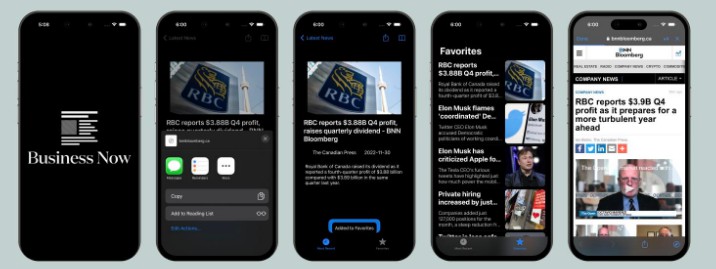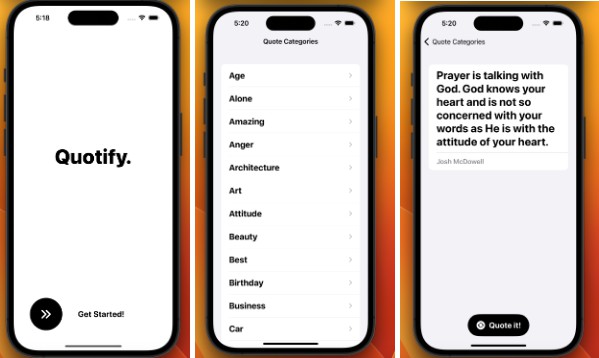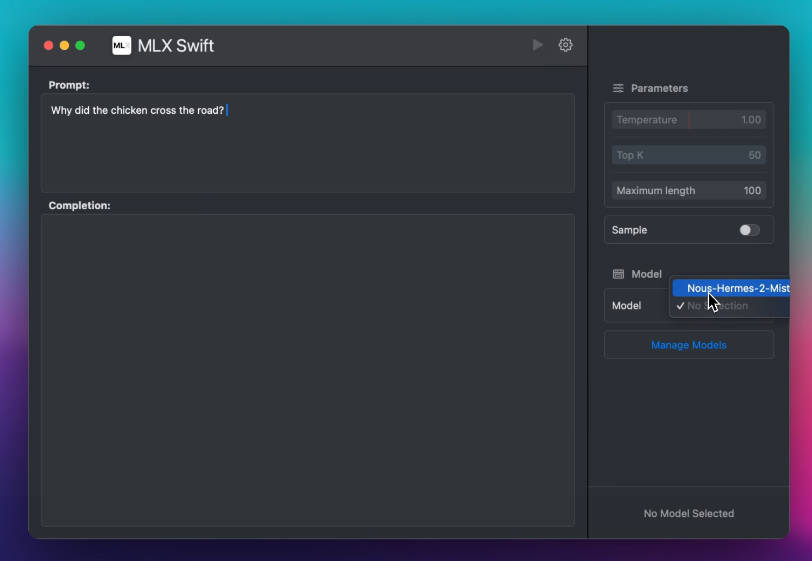Transitionable
What It Does
SwiftUI makes it easy to animate simple interface updates, but it quickly gets complicated when you want to update custom parameters during animations.
Animatable ViewModifiers make it possible to smoothly change a single VectorArithmetic conforming parameter. Chained AnimatablePairs can handle more, but it’s messy.
Transitionable allows you to create any changes you want to a set of parameters as an animation proceeds from 0-1.
How To Use It
Create a Transitionable conforming struct containing the parameters you want to transition:
struct FontDescriptor: Transitionable
{
let style: BlockFontStyle
let size: CGFloat
let weight: CGFloat
let lineSpacing: CGFloat
}
Implement transition(to:, progress:), defining how your parameters should change over the course of an animation – progress will go from 0 to 1:
func transition(_ other: FontDescriptor, progress: CGFloat) -> FontDescriptor {
let progress = progress * progress
return FontDescriptor(
style: progress < 0.5 ? style : other.style,
size: progress.lerp(min: size, max: other.size),
weight: progress.lerp(min: weight, max: other.weight),
lineSpacing: progress.lerp(min: lineSpacing, max: other.lineSpacing))
}
Add an EnvironmentKey for your parameters:
private struct FontDescriptorKey: EnvironmentKey {
static let defaultValue = Style.fontDescriptor(for: defaultState)
}
extension EnvironmentValues {
var fontDescriptor: FontDescriptor {
get { self[FontDescriptorKey.self] }
set { self[FontDescriptorKey.self] = newValue }
}
}
Pass your parameters to child views using the View extension:
MyTextView()
.environmentTransition(\.fontDescriptor, Style.fontDescriptor(for: someState))
Use the parameters as you wish in your View:
struct MyTextView: View
{
@Environment(\.fontDescriptor) var fontDescriptor: FontDescriptor
var body: some View {
...
}
}




